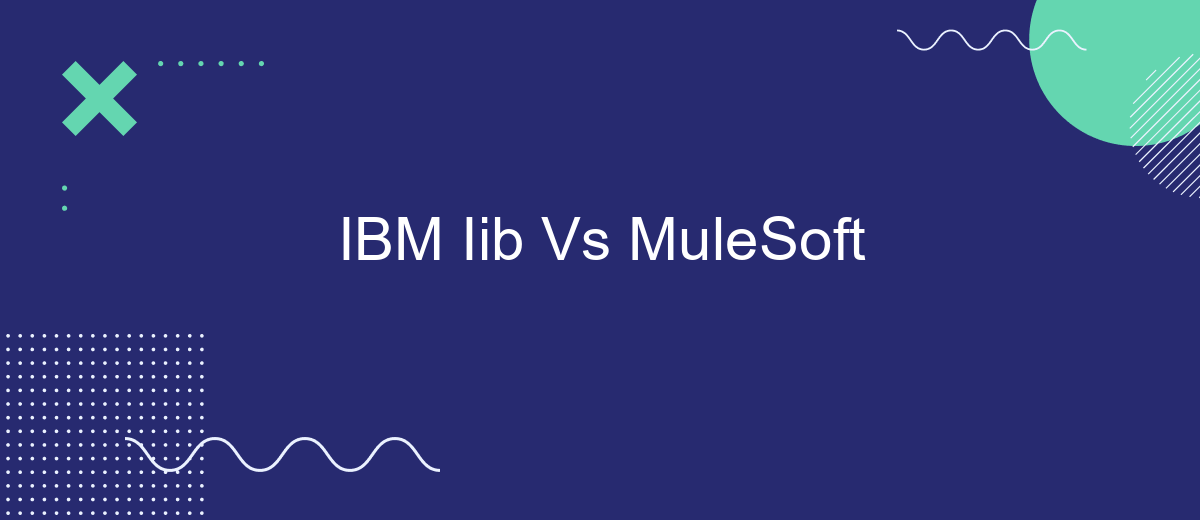In the rapidly evolving landscape of enterprise integration, IBM Integration Bus (IIB) and MuleSoft stand out as two prominent solutions. Both platforms offer robust capabilities for connecting disparate systems and streamlining business processes. This article aims to compare IBM IIB and MuleSoft, highlighting their key features, strengths, and potential drawbacks to help organizations make an informed decision.
Introduction
In the ever-evolving landscape of enterprise integration, choosing the right platform to seamlessly connect applications and data is crucial. IBM Integration Bus (IIB) and MuleSoft are two prominent integration solutions that offer robust tools for businesses to streamline their processes and enhance connectivity. This article delves into a comparison between IBM IIB and MuleSoft, evaluating their features, capabilities, and overall performance.
- IBM Integration Bus (IIB): Known for its powerful integration capabilities and support for a wide range of protocols and data formats.
- MuleSoft: Renowned for its API-led connectivity approach and extensive library of connectors to various applications and services.
Both platforms have their unique strengths and are tailored to meet different business needs. Additionally, services like SaveMyLeads can further simplify the integration process by automating lead data transfers between various platforms, ensuring that businesses can maintain seamless and efficient workflows. Understanding the key differences and advantages of IBM IIB and MuleSoft will help organizations make an informed decision on which integration solution best fits their requirements.
Key Features and Functionality

IBM Integration Bus (IIB) and MuleSoft Anypoint Platform are both powerful integration tools, each with distinctive features and functionalities. IBM IIB offers robust support for a wide range of protocols and data formats, making it a versatile choice for complex enterprise environments. It provides advanced message routing, transformation, and enrichment capabilities, ensuring seamless data flow across various systems. Additionally, IBM IIB's strong emphasis on security and compliance makes it a reliable option for industries with strict regulatory requirements.
On the other hand, MuleSoft Anypoint Platform excels in its ease of use and flexibility. It offers a unified platform for API management, design, and integration, facilitating rapid development and deployment. MuleSoft's pre-built connectors and templates simplify the integration process, reducing the need for extensive custom coding. Moreover, its cloud-native architecture supports scalability and agility, making it suitable for modern, dynamic business environments. For those seeking to streamline their integration processes further, services like SaveMyLeads can complement these platforms by automating data transfers and enhancing overall efficiency.
Comparison

When comparing IBM IIB and MuleSoft, both platforms offer robust solutions for integration needs, but they cater to different requirements and use cases. IBM IIB, known for its enterprise-level capabilities, excels in complex, large-scale integrations. MuleSoft, on the other hand, is celebrated for its flexibility and ease of use, making it a popular choice for businesses of all sizes.
- Scalability: IBM IIB is designed for high-volume environments, making it ideal for large enterprises. MuleSoft also supports scalability but is more accessible for smaller companies.
- Ease of Use: MuleSoft offers a user-friendly interface and quicker deployment times, while IBM IIB requires more specialized knowledge and longer setup periods.
- Flexibility: MuleSoft provides extensive pre-built connectors and templates, which can be further enhanced with services like SaveMyLeads for seamless integration. IBM IIB offers flexibility but often requires more custom development.
Ultimately, the choice between IBM IIB and MuleSoft depends on the specific needs of the business. For enterprises requiring extensive, high-volume integrations, IBM IIB is a strong contender. For organizations seeking a more adaptable and user-friendly solution, MuleSoft, possibly enhanced with tools like SaveMyLeads, may be the better option.
Use Cases

IBM IIB (Integration Bus) and MuleSoft are powerful tools for integrating various systems and applications. They serve different use cases, making them suitable for diverse business needs. IBM IIB is often chosen for its robust capabilities in enterprise-level integrations, especially in industries like finance and healthcare.
On the other hand, MuleSoft is known for its flexibility and ease of use, which makes it ideal for rapid integrations and agile environments. It is particularly popular among organizations that require quick and efficient API management.
- IBM IIB: Ideal for complex, large-scale enterprise integrations.
- MuleSoft: Best for agile, quick-to-deploy API integrations.
- SaveMyLeads: Suitable for automating lead data transfer between platforms.
Ultimately, the choice between IBM IIB and MuleSoft depends on the specific requirements and constraints of your organization. For businesses that need to automate lead data transfer, SaveMyLeads can be a complementary service, providing seamless integration solutions to ensure that all lead information is accurately and promptly transferred between systems.
Conclusion
In conclusion, both IBM IIB and MuleSoft offer robust solutions for enterprise integration, each with its unique strengths and capabilities. IBM IIB excels in handling complex, large-scale integration projects with its extensive range of features and enterprise-grade reliability. On the other hand, MuleSoft provides a more flexible and user-friendly approach, making it suitable for organizations looking to quickly adapt and scale their integration efforts.
Ultimately, the choice between IBM IIB and MuleSoft will depend on your specific business needs, technical requirements, and long-term integration strategy. For those looking to streamline the setup and management of integrations, tools like SaveMyLeads can further enhance productivity by automating data transfer between various platforms. By carefully evaluating the strengths of each platform and considering additional tools to support your integration efforts, you can ensure a seamless and efficient integration landscape for your organization.


FAQ
What are the primary differences between IBM IIB and MuleSoft?
Which platform is more suitable for cloud integration?
Can both IBM IIB and MuleSoft handle real-time data integration?
How do the licensing models of IBM IIB and MuleSoft compare?
What options are available for automating and setting up integrations without extensive coding?
If you use Facebook Lead Ads, then you should know what it means to regularly download CSV files and transfer data to various support services. How many times a day do you check for new leads in your ad account? How often do you transfer data to a CRM system, task manager, email service or Google Sheets? Try using the SaveMyLeads online connector. This is a no-code tool with which anyone can set up integrations for Facebook. Spend just a few minutes and you will receive real-time notifications in the messenger about new leads. Another 5-10 minutes of work in SML, and the data from the FB advertising account will be automatically transferred to the CRM system or Email service. The SaveMyLeads system will do the routine work for you, and you will surely like it.
